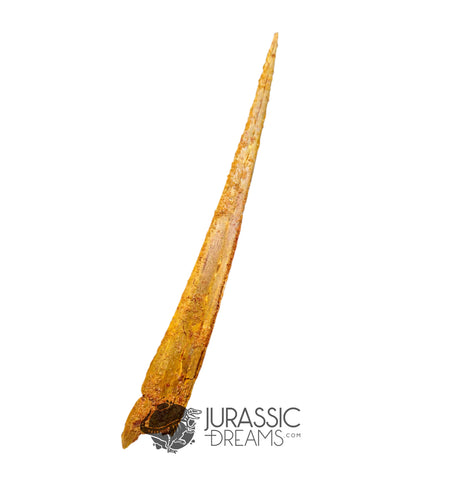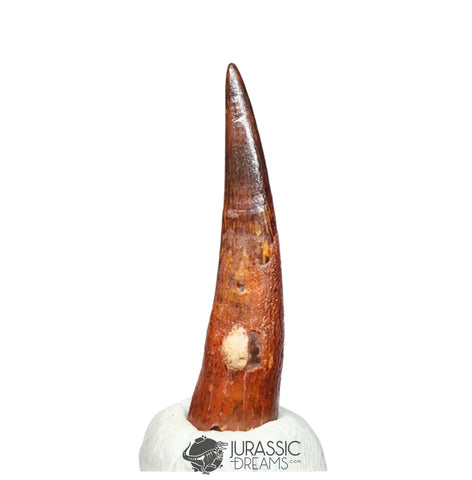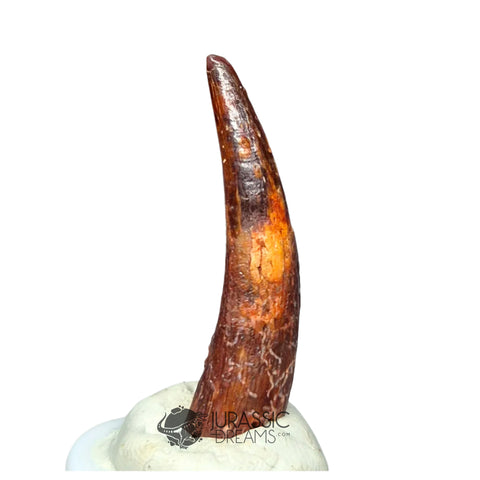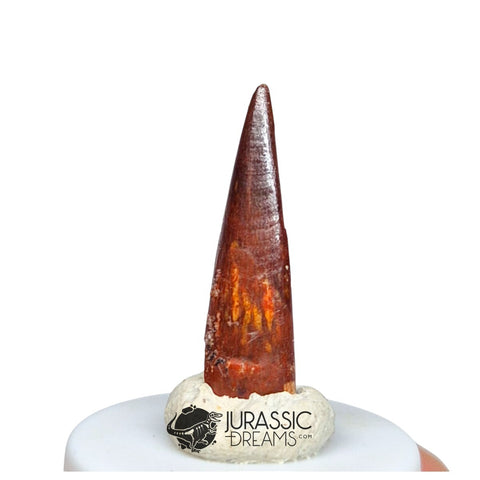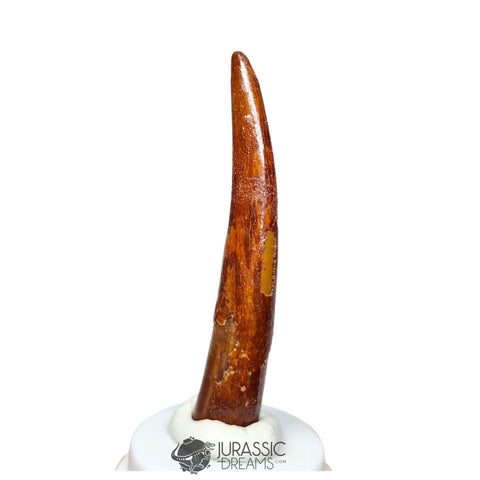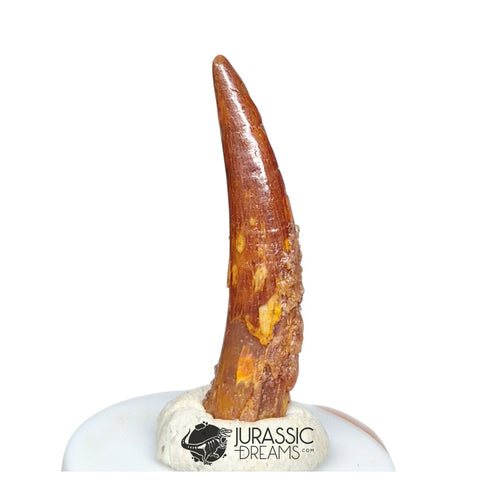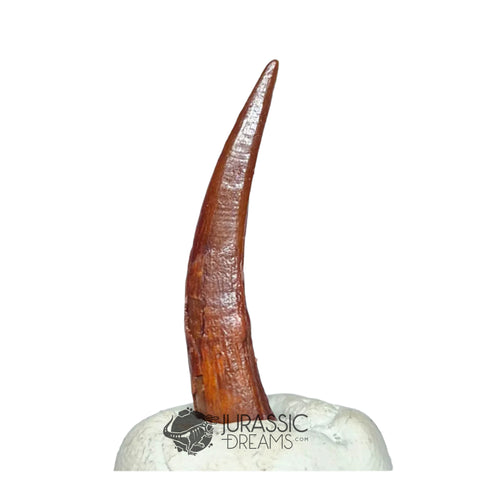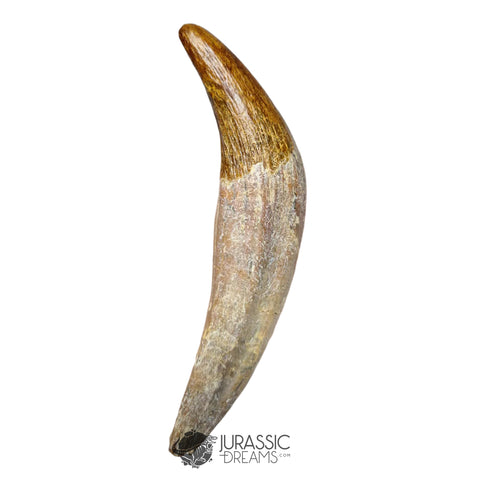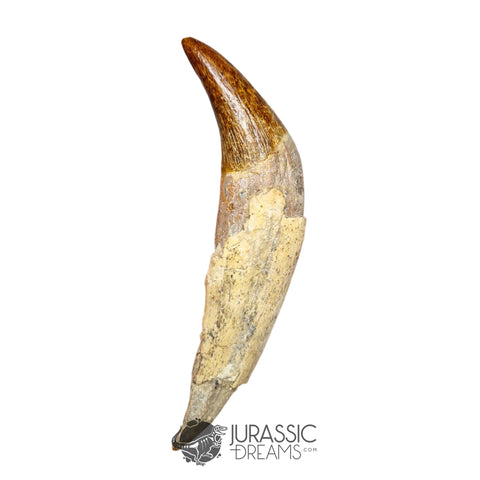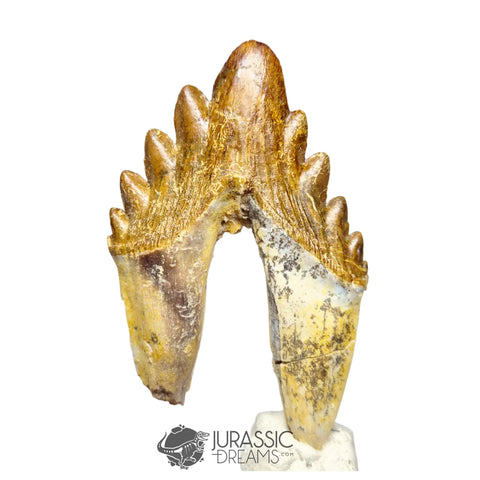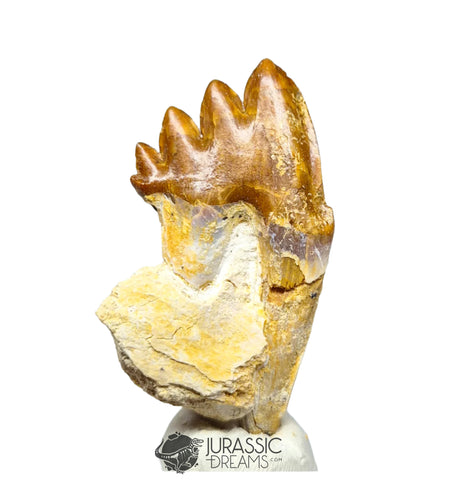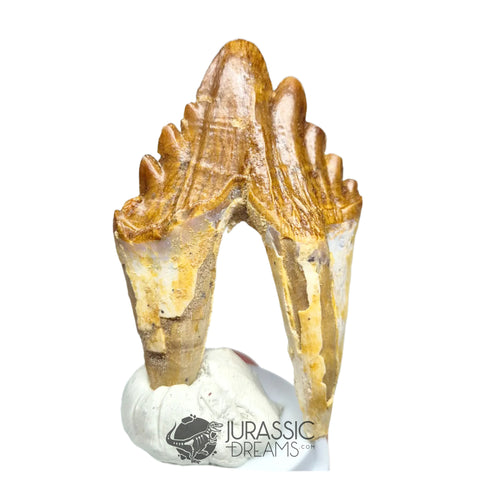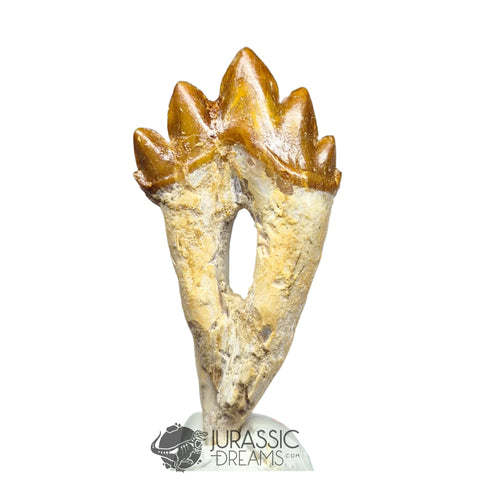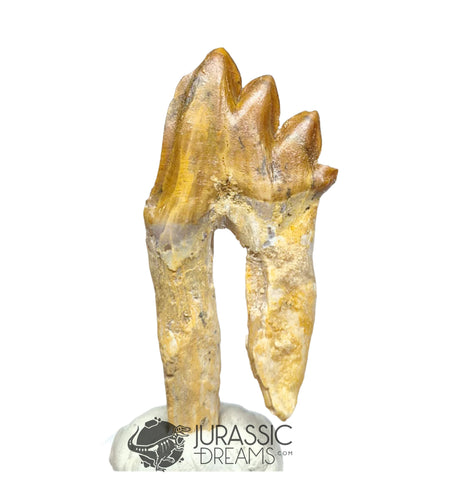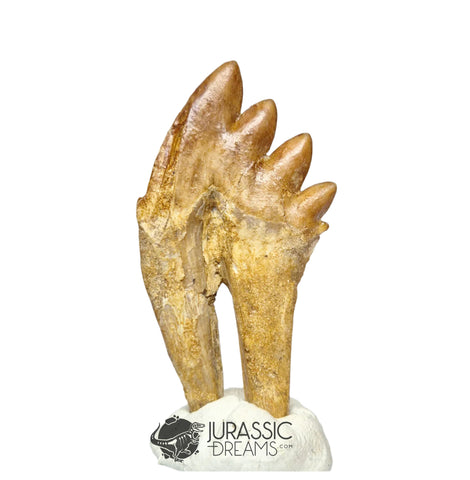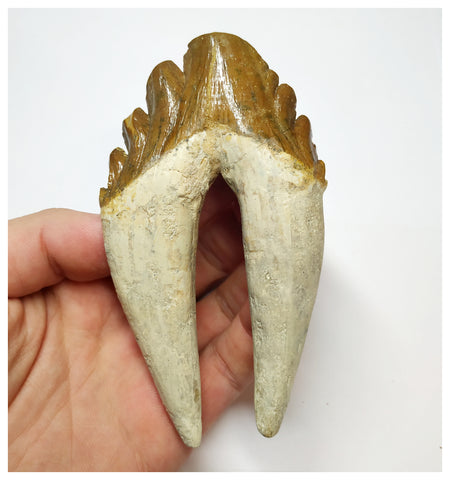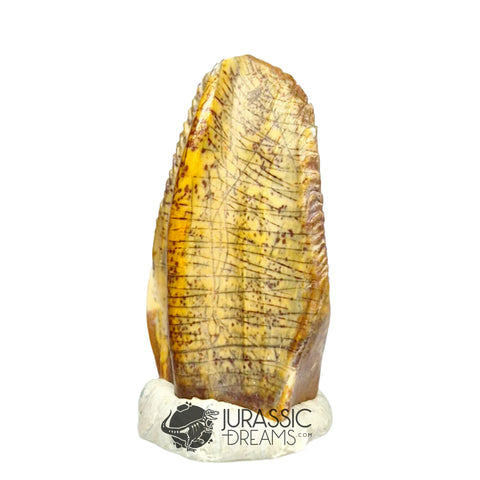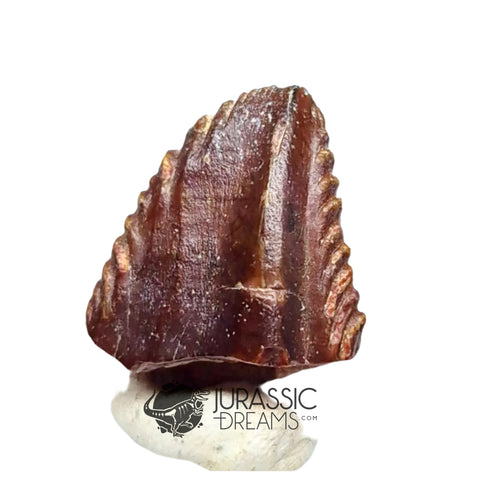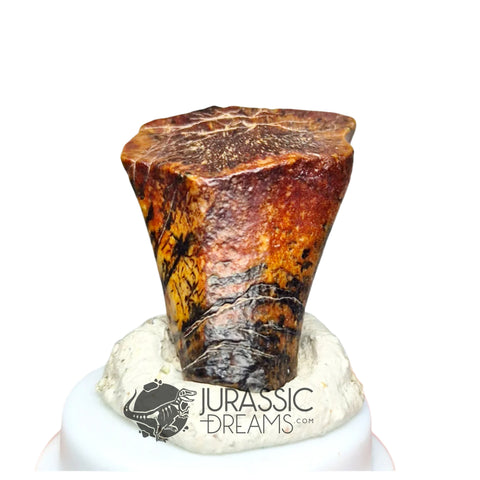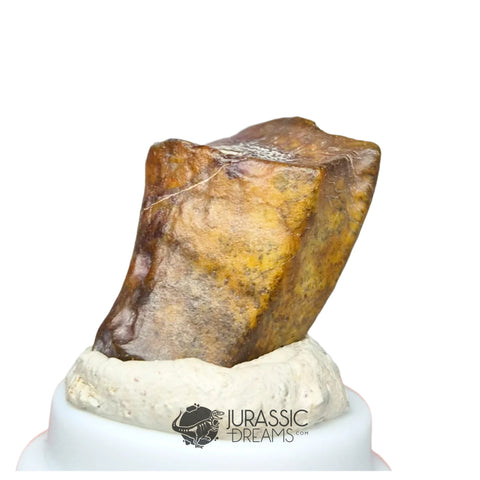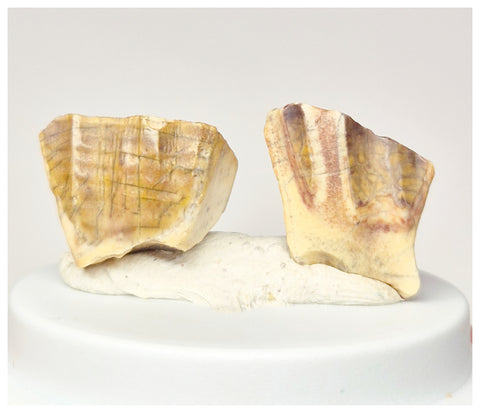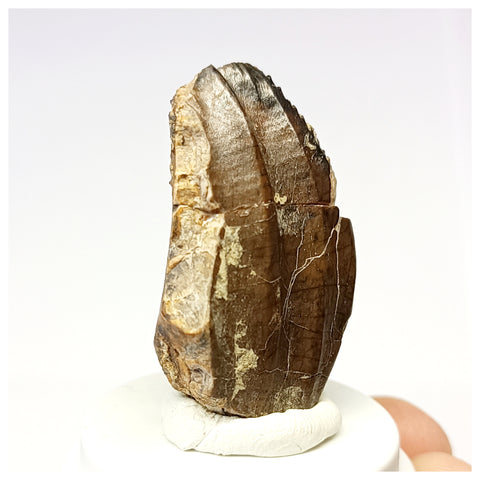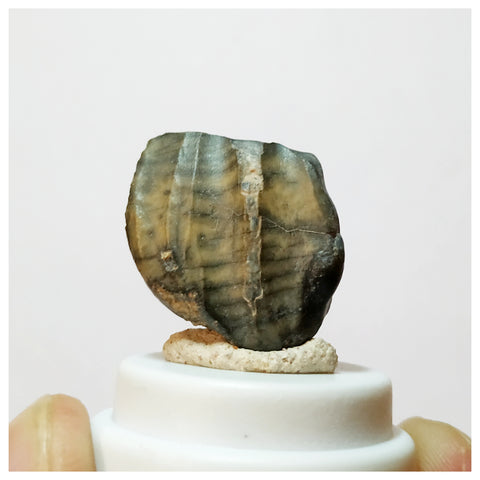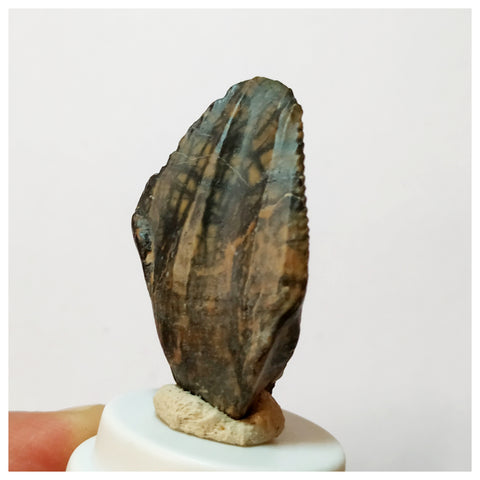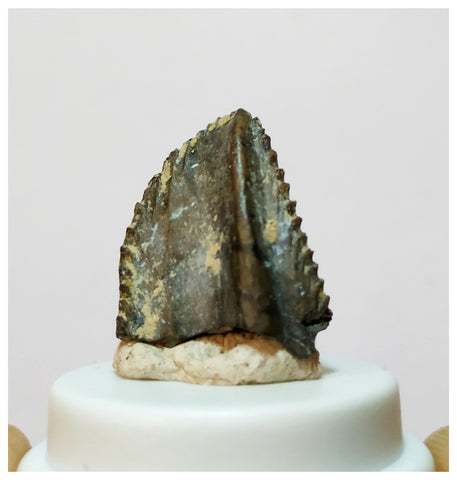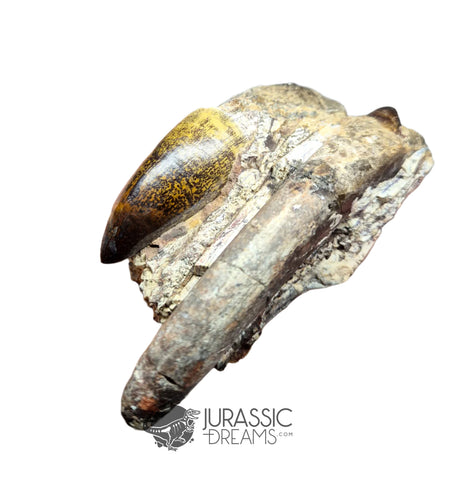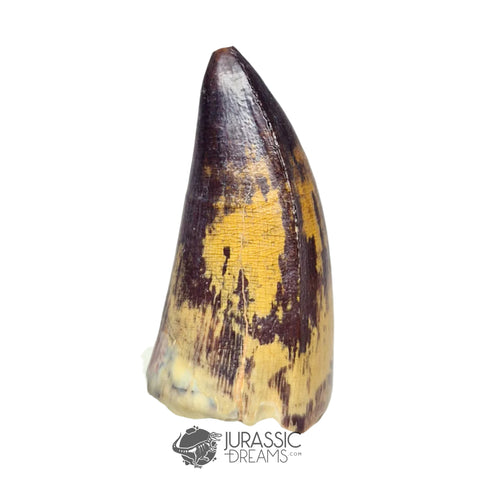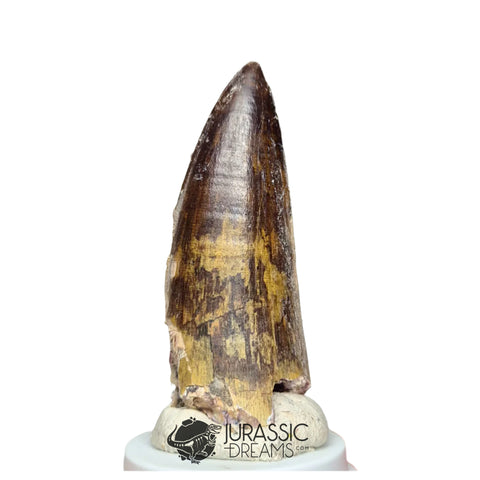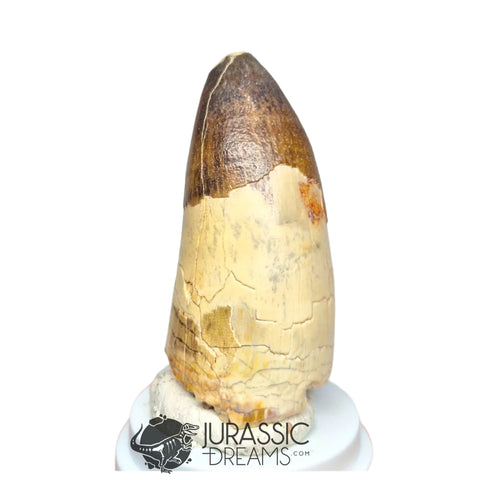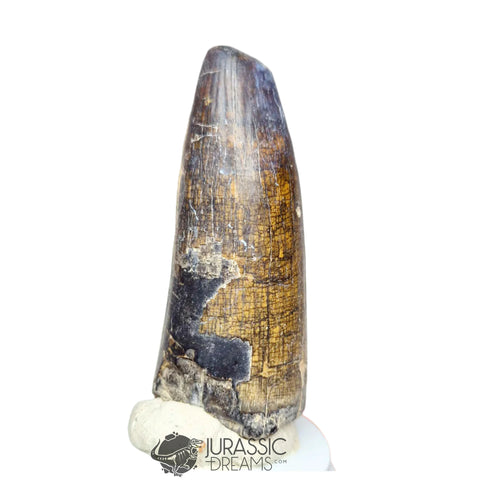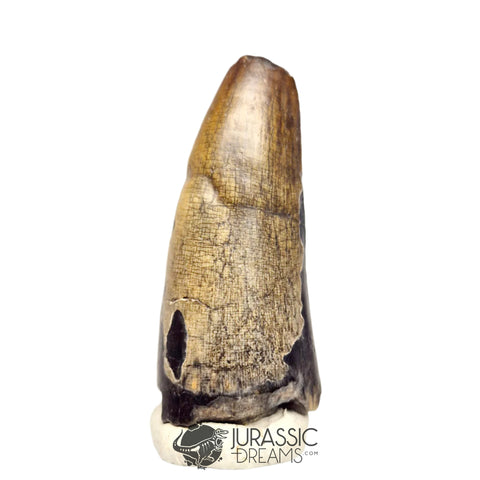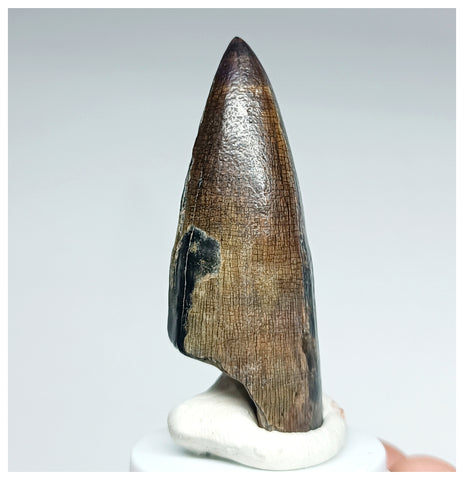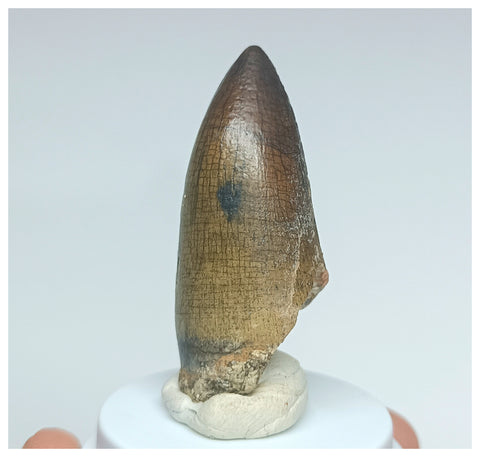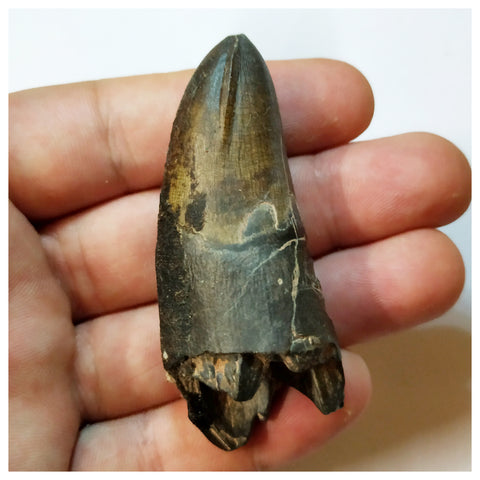Unique and extremely rare specimen. The entire mandible and cranial remains of this mosasaur species are extremely rare. This specimen was broken in small sector during the initial collecting efforts but all parts were put back together and there is no restoration and no fabrication. Museum Grade.
This specimen has been stabilized on its surface by Paraloid B-72 to ensure its stability and consistency. This process does not affect neither the color nor any of the characteristics. It simply makes the specimen better preserved in the long term.
In the international market is very common to find Mosasaurus rests coming from the phosphate quarries of the Upper Cretaceous of the Ouled Abdoun Basin (Morocco).
This quarries have been exploited since the beginning of the past century. Many sellers that sell this fossils do not make a good precise taxonomic identification work.
In these sites there are numerous different species of Mosasaurus described in the enormous assemblage of giant marine reptiles that reigned the seas during the Cretaceous.
The main rich levels in these paleontological taxons are in the deeper stratigraphic levels of the sedimentarian filling of the Ouled Abdoun Basin. The age of these correspond to the Maastrichtian stage, 66 million years ago.
Most of the research carried out on these marine reptiles from Morocco have been performed by French researchers.
Next we list the different Mosasaur species which have been recognised in the phosphate rocks in North Africa:
-Halisaurus aramborgi (Bardet et al., 2005)
-Halisaurus walkeri (Lingham-Solier, 1998)
-Prognathodon sp (Dollo, 1889)
-Prognathodon anceps (Leiodon anceps)
-Prognathodon solvay (Dollo, 1889)
-Prognathodon currii (Christiansen & Bonde, 2002)
-Eremiasaurus heterodontus (LeBlanc et al., 2012)
-Mosasaurus beaugei (Arambourg, 1952)
-Mosasaurus hoffmanni (Mantell, 1829)
-Tylosaurus (Marsh, 1872)
-Platecarpus ptychodon (Arambourg, 1954)
-Globidens phosphaticus (Bardet et al., 2005)
-Carinodens belgicus (Bardet et al., 2005)
The Ouled Abdoun Basin (or Khouribga Basin), located in the central sector of Morocco, is an enormous sedimentarian basin represented mostly by a vast filling of phosphate sediments. Apart from having a relevant raw material to be extracted, it has a series of very important paleontological sites in which amazing assemblages from big and small marine vertebrates are present. The basin has a so great continuity in its stratigraphic record that both the Upper Cretaceous as well as the two first epochs of the Paleogene (Paleocene and Eocene) can be studied.
The main assemblage of vertebrate fossils of the Paleogene sector present there is composed by sharks, fish, turtles, marine snakes, rays, crocodiles, other types of reptiles and even marine birds. In the Cretaceous part we can add Mosasaurs, Pterosaurs and Plesiosaurs.
Next you can visit a link with very interesting information about this sedimentarian basin rich in fossil vertebrates: Ouled Abdoun Basin
systematic paleontology
Squamata Oppel, 1811
Mosasauridae Gervais, 1853
Mosasaurinae Gervais, 1853
Globidensini Russell, 1967
Globidens Gilmore, 1912
Globidens phosphaticus, Bardet & Pereda Suberbiola, nov. sp.2005
Sources: The Fossil Forum - Moroccan Mosasaurs - General Fossil Discussion
Etymology – In reference to the deposits which have yielded this species.
Publications :
-The North African Mosasaur Globidens phosphaticus from the Maastrichtian of Angola
-A New Species of Globidens from Morocco
-Insights into the anatomy and functional morphology of durophagous mosasaurines (Squamata: Mosasauridae)
Diagnosis :
Diagnosis – In comparison to G. alabamaensis and G. dakotensis, strongly heterodont. Anterior teeth broadly conical, taller than long, posteriorly recurved then straight, with discrete apical carinae. Mid-posterior teeth bulbous, anteriorly taller than long becoming longer than tall posteriorly, irregularly oval in cross-section, with an inflated posterior surface, a large eccentric and recurved apical nubbin, vertical sulci on medial and lateral faces, no carinae, and enamel surface covered by crude anastomosing ridges.
†Globidens, Gilmore 1912 (mosasaur)
Reptilia - Squamata - Mosasauridae
Full reference: C. W. Gilmore. 1912. A new mosasauroid reptile from the Cretaceous of Alabama. Proceedings of the United States National Museum 41(1870):479-484
Parent taxon: Globidensini according to A. R. H. LeBlanc et al. 2012
See also Antunes 1964, Bardet et al. 2005, Bell and Polcyn 2005, Carroll 1988, Dortangs et al. 2002, Gilmore 1912, McDowell and Bogert 1954, Polcyn et al. 2010, Russell 1967, Russell 1970, Sepkoski 2002 and Thurmond 1969
Sister taxa: Carinodens, Prognathodon
Subtaxa: Globidens alabamensis, Globidens dakotensis, Globidens phosphaticus, Globidens schurmanni
Ecology: aquatic carnivore
Environments: marine, carbonate, estuary/bay, marginal marine, shallow subtidal.
Age range: 84.9 to 66.043 Ma
Distribution:
• Cretaceous of Angola, Belgium, Egypt , Jordan , Morocco , Syria , United States ( Alabama, Delaware, Kansas, South Dakota, Texas)
Sources: Globidens sp : Fossilworks (Paleobiology Database)












